Introduction
The Red Fort New Delhi India, also known as “Lal Qila,” is a historic fortification located in the heart of New Delhi, India. This grand structure stands as a testament to the rich history and cultural heritage of India, symbolizing the power and might of the Mughal Empire. Built in the mid-17th century by Emperor Shah Jahan, the Red Fort has witnessed significant events that have shaped Indian history, making it one of the most visited and revered landmarks in the country.
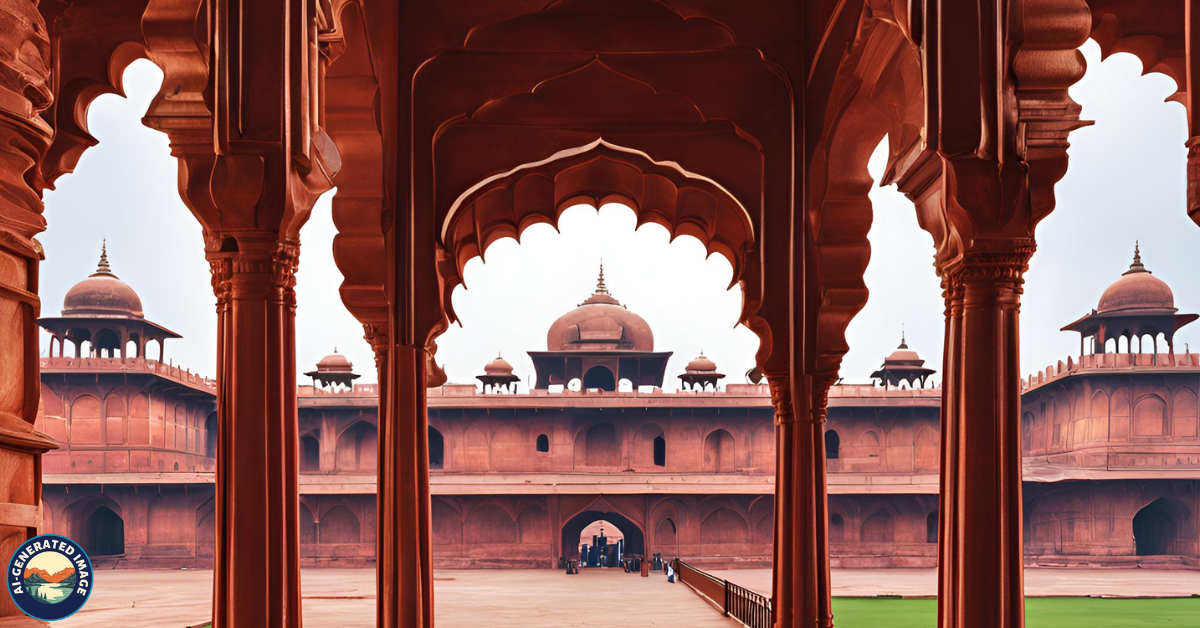
A Glimpse into the History of the Red Fort
The Mughal Era and Construction of the Red Fort
The Red Fort was commissioned by Emperor Shah Jahan in 1638 when he decided to shift the Mughal capital from Agra to Delhi. This grand fort was completed in 1648, serving as the main residence of the Mughal emperors for nearly 200 years. The fort’s strategic location along the Yamuna River was chosen not only for its defensive advantages but also for its proximity to the Mughal Empire’s new capital, Shahjahanabad. Exploring the Red Fort New Delhi India offers a fascinating glimpse into the opulent lifestyle of the Mughal royalty.
Architectural Brilliance and Design
The Red Fort is an architectural masterpiece that reflects the zenith of Mughal creativity and craftsmanship. Designed by the renowned architect Ustad Ahmad Lahori, who also designed the Taj Mahal, the fort is a blend of Persian, Timurid, and Indian architectural styles. The use of red sandstone and white marble gives it a distinctive appearance, while its intricate carvings, latticework, and expansive gardens showcase the opulence and grandeur of Mughal architecture. Every year, thousands of tourists flock to the Red Fort New Delhi India to witness its majestic architecture and learn about India’s past.
The Architectural Marvels Inside the Red Fort
Lahori Gate – The Grand Entrance
The Lahori Gate serves as the main entrance to the Red Fort and is an iconic symbol of Indian sovereignty and pride. This majestic gate is not just an entry point but also a historical landmark where the Prime Minister of India hoists the national flag on Independence Day, reflecting the fort’s deep connection with the nation’s struggle for freedom.
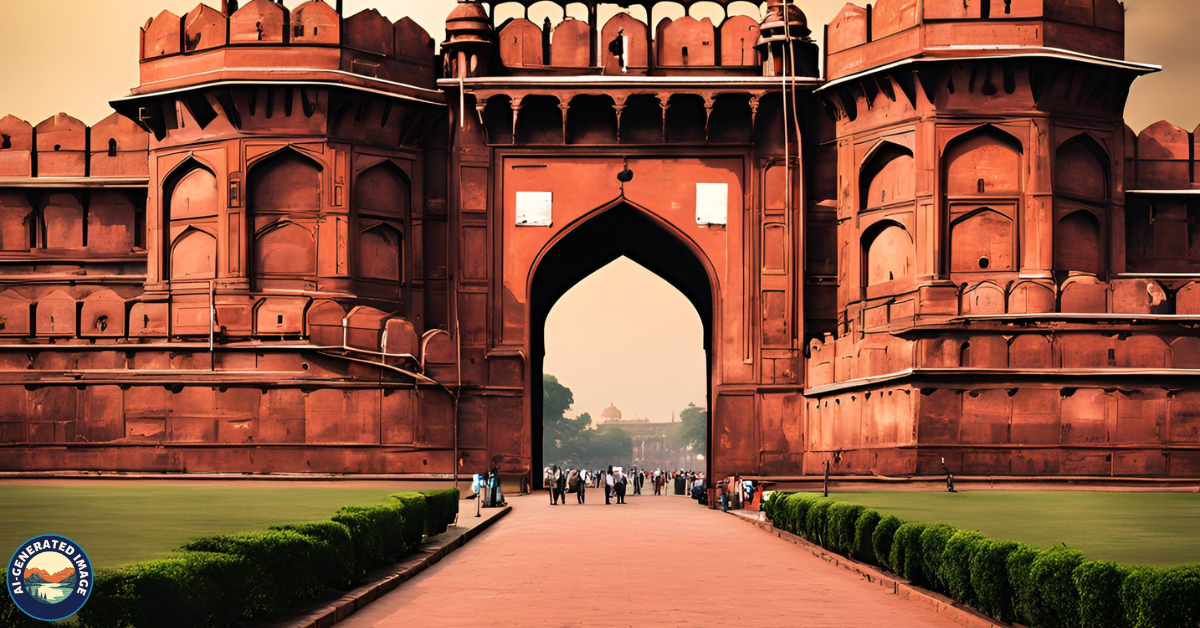
Diwan-i-Aam – The Hall of Public Audience
The Diwan-i-Aam, or the Hall of Public Audience, was where the emperor would address the public and listen to their grievances. This beautifully designed hall, adorned with ornate arches and a raised throne, exemplifies the Mughal commitment to justice and governance. The hall’s open design allowed for the emperor’s voice to be heard by all, reinforcing the Mughal rulers’ dedication to their subjects.
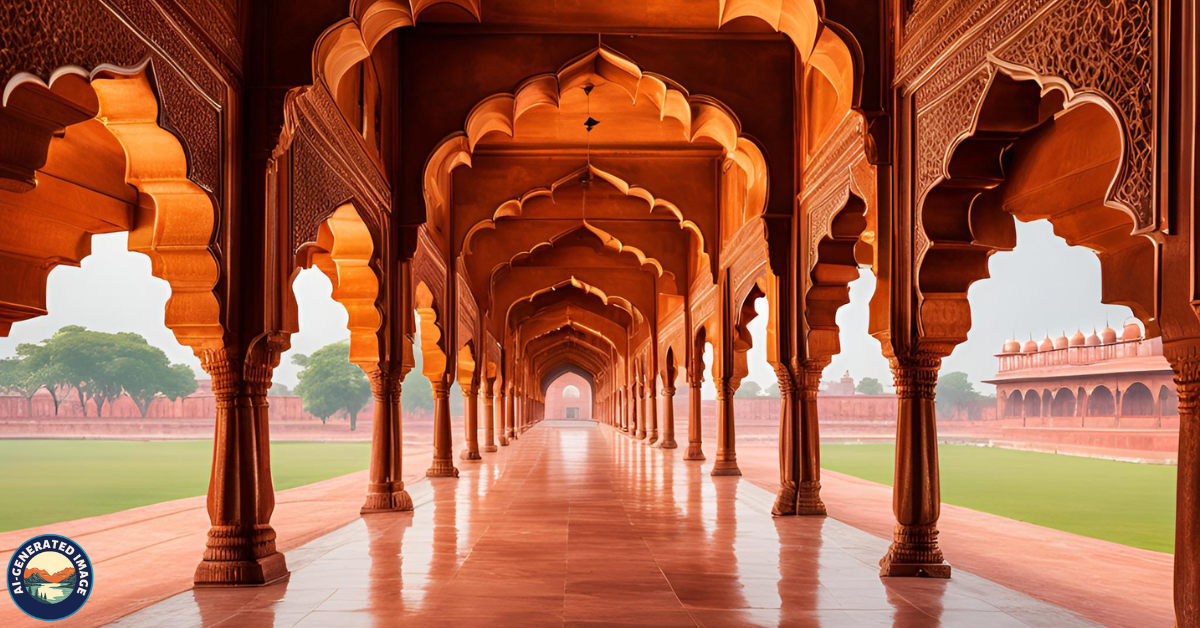
Diwan-i-Khas – The Hall of Private Audience
The Diwan-i-Khas, known as the Hall of Private Audience, is where the emperor would meet with his closest advisors and dignitaries. This hall is renowned for its exquisite inlay work, including the famous Peacock Throne, which was adorned with precious gems and symbolized the wealth and power of the Mughal Empire. The phrase “If there is a paradise on Earth, it is this, it is this, it is this” is inscribed here, highlighting the hall’s splendor and the emperor’s appreciation for art and beauty.
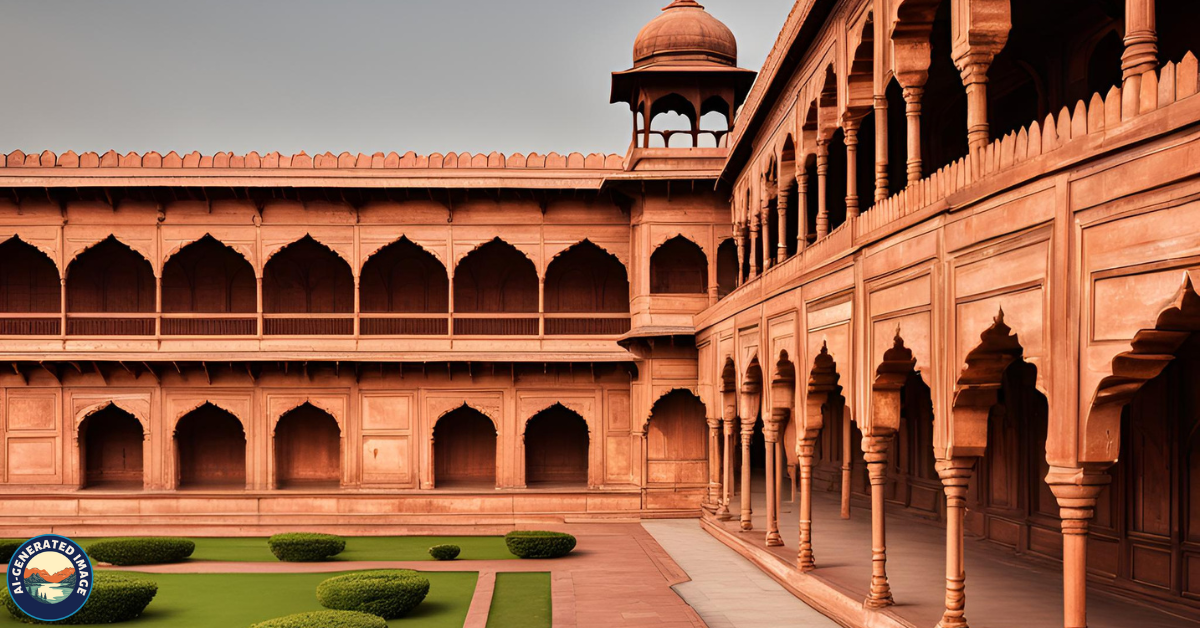
The Rang Mahal – Palace of Colors
The Rang Mahal, or the Palace of Colors, was one of the main palaces within the Red Fort complex, known for its vibrant interiors and water channels that kept the palace cool during the hot summers. This palace was primarily used by the emperor’s wives and mistresses, reflecting the luxurious lifestyle of the Mughal royalty. The ornate ceilings and walls, adorned with floral designs and intricate carvings, are a testament to the artistic excellence of the Mughal era.
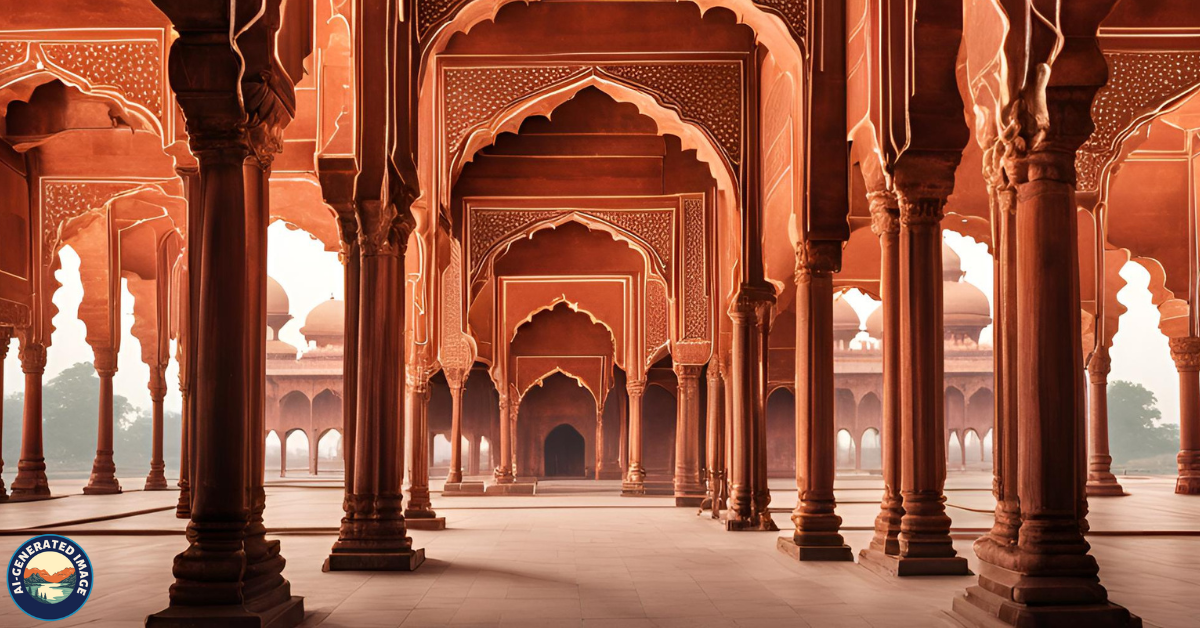
The Significance of the Red Fort in Indian Independence
Symbol of Power and Resistance
The Red Fort is not just an architectural marvel; it is also a symbol of India’s resilience and resistance against colonial rule. During the Indian freedom struggle, the fort became a site of defiance against the British, who used it as a military camp. The fort’s walls have witnessed the trials of freedom fighters, making it a symbol of India’s journey towards independence.
The Annual Independence Day Celebrations
Every year on August 15th, the Prime Minister of India hoists the national flag at the Red Fort, marking the country’s independence from British rule. This tradition began on August 15, 1947, when India’s first Prime Minister, Jawaharlal Nehru, raised the flag and delivered a speech to the nation. The annual celebrations at the Red Fort are a reminder of India’s hard-fought freedom and a tribute to the countless lives that were sacrificed for the nation’s independence. The Red Fort New Delhi India remains a powerful symbol of India’s fight for independence and national pride.
The Decline and Restoration of the Red Fort
Periods of Neglect
After the fall of the Mughal Empire, the Red Fort went through periods of neglect, particularly during British rule. The British demolished several structures within the fort and used it as a garrison, which led to significant damage and alteration of its original design. Even after India gained independence, the fort did not receive the immediate attention it deserved, resulting in further deterioration.
Restoration Efforts
Recognizing its historical and cultural importance, the Indian government, along with the Archaeological Survey of India (ASI), initiated extensive restoration efforts to preserve the Red Fort. In 2007, the Red Fort was designated a UNESCO World Heritage site, underscoring its global significance. Restoration projects have aimed to restore the fort’s original glory, ensuring that future generations can continue to admire this architectural marvel. Restoration efforts at the Red Fort New Delhi India have helped preserve its historical and architectural integrity for future generations.
Visiting the Red Fort Today
How to Reach the Red Fort
Located in the heart of Delhi, the Red Fort is easily accessible by various modes of transportation, including metro, buses, and taxis. The nearest metro station is Chandni Chowk, which is just a short walk from the fort. For those traveling by car, parking facilities are available near the entrance.
Entry Fees and Timings
The Red Fort is open to visitors every day except Mondays, with entry fees varying for Indian and international tourists. It is advisable to visit during the early morning or late afternoon to avoid the midday heat and enjoy a leisurely tour of the fort’s expansive grounds.
Tips for Tourists
When visiting the Red Fort, it is recommended to wear comfortable walking shoes and carry water, as exploring the fort can be quite an extensive walk. Hiring a guide or using an audio guide can enhance your experience by providing detailed insights into the fort’s history and architecture. Additionally, don’t miss the sound and light show held in the evening, which brings the fort’s history to life through stunning visual effects and storytelling.
Conclusion
The Red Fort of New Delhi is not just a historical monument; it is a living testimony to India’s rich heritage, resilience, and spirit of freedom. From its grand architecture to its role in shaping India’s history, the Red Fort continues to inspire and attract millions of visitors from around the world. Whether you are a history enthusiast, an architecture lover, or simply looking to explore the cultural roots of India, the Red Fort offers a captivating journey through time. As one of the most visited monuments in the country, the Red Fort New Delhi India plays a vital role in promoting India’s cultural heritage.
FAQs
What is the Red Fort famous for?
The Red Fort is famous for its stunning Mughal architecture, historical significance, and its role as a symbol of India’s independence, where the Prime Minister hoists the national flag on Independence Day.
Who built the Red Fort and why?
The Red Fort was built by Mughal Emperor Shah Jahan in 1638 as the new capital of the Mughal Empire and as a royal residence for the emperor and his court. Constructed by Mughal Emperor Shah Jahan, the Red Fort New Delhi India stands as a symbol of the country’s rich history and architectural brilliance.
What was the duration of the construction of the Red Fort?
The construction of the Red Fort took about ten years, starting in 1638 and completed in 1648.
What are the major attractions inside the Red Fort?
Major attractions inside the Red Fort include the Lahori Gate, Diwan-i-Aam, Diwan-i-Khas, Rang Mahal, and the Mumtaz Mahal, each showcasing the exquisite Mughal architecture and design.
Is the Red Fort open to the public all year round?
Yes, the Red Fort is open to the public throughout the year, except on Mondays. It is advisable to check for any special closures or events before planning your visit. The Red Fort New Delhi India is a UNESCO World Heritage site that attracts millions of visitors each year.
